Founded in 1917, the Patna Museum isn’t just a repository of artifacts; it’s a portal to Bihar’s glorious past. The imposing facade, adorned with intricate carvings, beckons you inside – a promise of a captivating journey through time.
Patna Museum isn’t just a repository of artifacts; it’s a portal to Bihar’s glorious past. The imposing facade, adorned with intricate carvings, beckons you inside – a promise of a captivating journey through time.
Join us on this exploration of the museum’s hallowed halls. Here, every artifact whispers a story, every sculpture evokes emotion, and every piece of art ignites your curiosity. The vast collection spans millennia, from ancient treasures of the Mauryan and Gupta empires to exquisite Pala sculptures. Each exhibit unveils a thread in the rich tapestry of Bihar’s cultural heritage.
How to reach:
Taking Flight: Jay Prakash Narayan International Airport, a mere 6 kilometers away, is your closest air link. Taxis and ride-sharing apps like Uber and Ola whisk you to the museum within 20 minutes, depending on traffic.
Train Travel: Patna Junction Railway Station is your best bet, situated just 3 kilometers from the museum. Taxis and local auto-rickshaws are readily available, taking you there in about 15 minutes, traffic permitting.
Hitting the Road: Patna boasts excellent road connectivity with neighboring states and cities. Buses, cars, and motorcycles can all bring you to the museum’s doorstep. Situated near the city center, it’s easily accessible from various points. If you’re driving, parking is available nearby.
Exploring the City: Once in Patna, a vibrant network of local transportation awaits. Auto-rickshaws, cycle-rickshaws, taxis, and ride-sharing apps offer convenient ways to navigate the city and reach the Patna Museum – your gateway to Bihar’s glorious past.
Best time to visit:
Winter Wonderland (October – February):
For an ideal Patna Museum experience, consider the winter months. The weather transforms into a cool haven, with temperatures hovering between 10°C and 25°C. This allows for comfortable exploration of the museum’s vast collections without battling extreme heat or humidity.
Spring’s Embrace (March – May):
Spring paints Patna with warmer colors, with temperatures ranging from 20°C to 35°C. While slightly warmer, the early part of spring remains a pleasant time to visit. You can delve into the museum’s treasures and enjoy cultural events without the peak season crowds.
Monsoon Musings (June – September):
Patna experiences heavy rainfall and occasional flooding during the monsoon season (June to September). Though the museum stays open, transportation disruptions and limited outdoor activities might pose challenges. Consider checking weather forecasts and road conditions before planning your visit during this period. Be prepared for rain if you choose to visit during the monsoon.
Attractions:
Ancient Artefacts, Patna Museum:
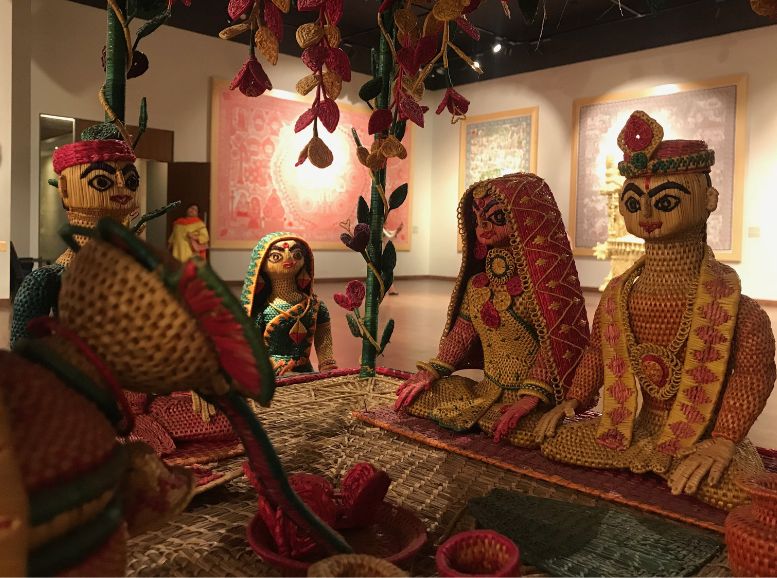
The Patna Museum isn’t a museum; it’s a time machine. Step inside and be transported to a world of antiquity. Here, a treasure trove of ancient artifacts, whispers of the glorious Mauryan, Gupta, and Pala eras, unfolds before you.
These aren’t mere relics; they’re captivating windows into the soul of Bihar’s cultural tapestry. Each meticulously crafted sculpture stands as a silent storyteller, weaving tales of dynasties long past. From the serenity of Buddha statues to the majesty of Hindu deities, every artifact unveils a chapter of Bihar’s rich artistic and architectural heritage.
Didarganj Yakshi:
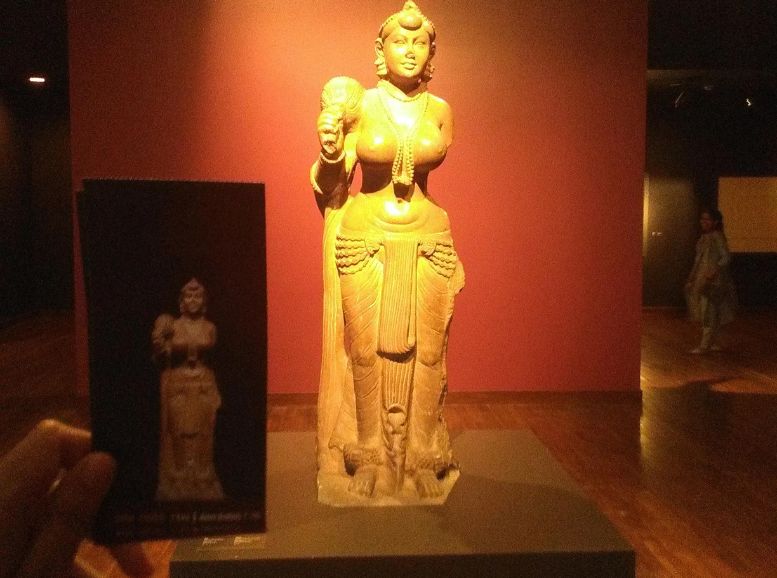
The Didarganj Yakshi isn’t a mere statue; it’s a timeless beacon of Mauryan sculptural mastery. Carved from sandstone over two thousand years ago, this iconic figure continues to captivate visitors with her ethereal beauty and grace. Her delicate features and elegant posture epitomize the pinnacle of Indian artistry during this era.
Standing before the Didarganj Yakshi feels like stepping into a portal to the past. Here, artistic splendor and cultural flourishing come alive. Art served as a bridge between spiritual beliefs and aesthetic ideals, and every detail whispers of that connection.
Natural History Gallery:
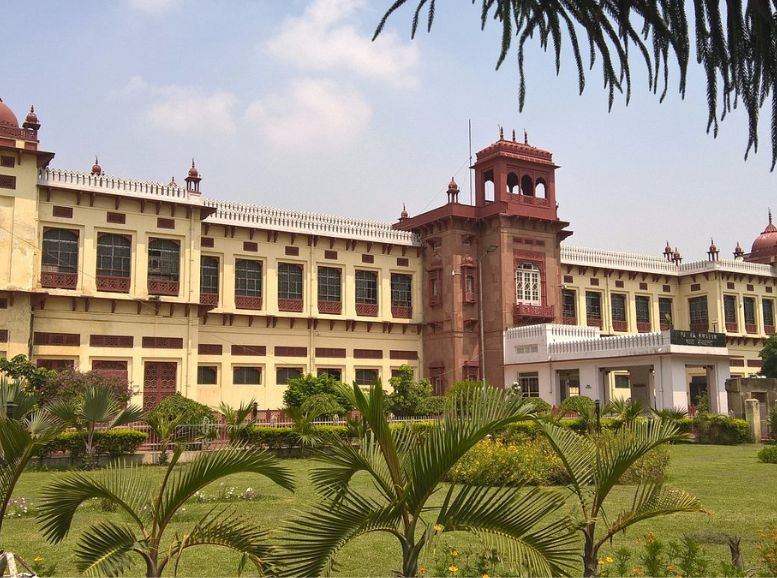
Taxidermy marvels await – majestic tigers frozen mid-prowl, vibrant birds showcasing plumage that puts any artist to shame. Botanical displays reveal the region’s unique plant life, from delicate orchids to towering trees, each whispering secrets of a hidden world. Geological formations stand as silent sentinels, each rock a testament to eons past.
The Natural History Gallery isn’t just a museum; it’s a celebration of Bihar’s vibrant biodiversity. It allows you to witness the delicate dance of nature, the intricate web of life that thrives within the state’s borders. With every exhibit, a deeper understanding of the need for conservation blossoms.
Stone Sculptures:
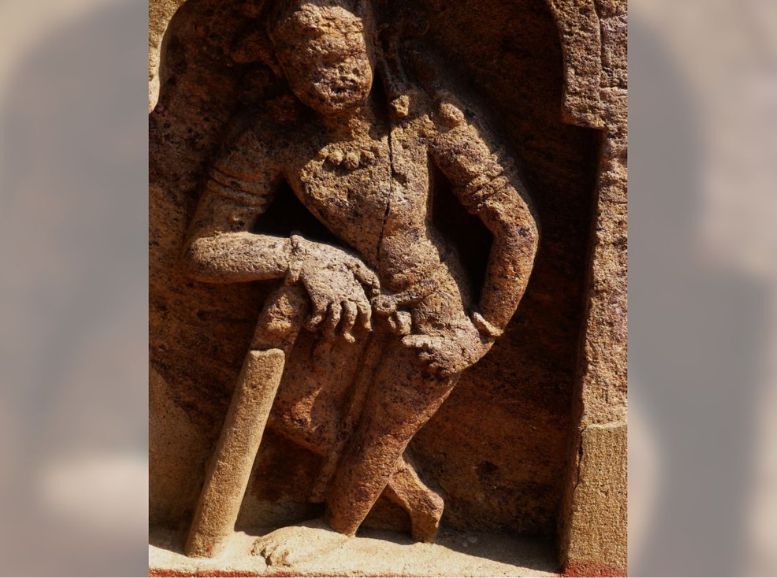
The Patna Museum transforms into a sanctuary of divine beauty as you enter. Exquisite stone sculptures, like silent storytellers, grace the halls. Each is meticulously carved, depicting scenes from ancient epics and mythological tales in breathtaking detail.
From the serenity of Lord Shiva’s countenance to the intricate forms of celestial beings, these stone marvels transport you to a realm steeped in spirituality. Art transcends its physical form, becoming a bridge to the divine.
Terracotta Gallery:
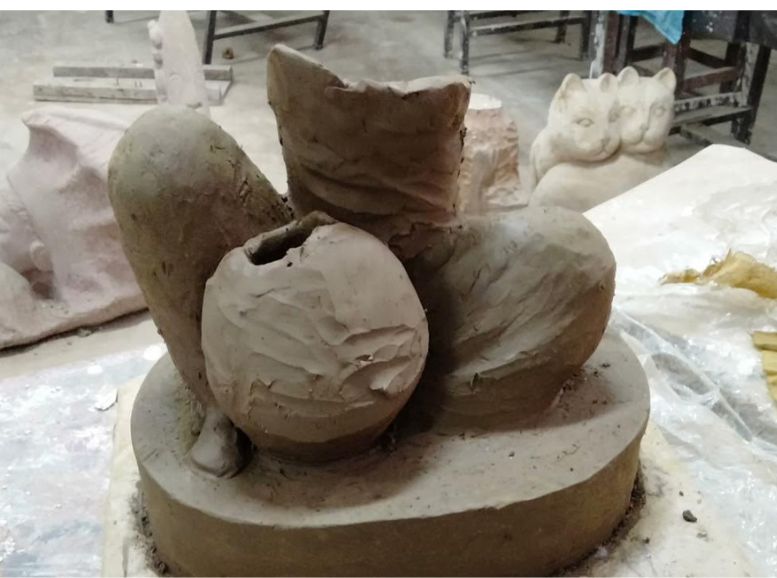
Step into the Terracotta Gallery and prepare to be captivated by a legacy sculpted from earth. Ancient artifacts, whispering secrets of a bygone era, come alive before your eyes. From graceful figurines that showcase the sculptor’s meticulous skill to ornate pottery adorned with intricate designs, each piece stands as a testament to the creativity of Bihar’s ancient artisans.
Here, the gallery acts as a portal, transporting you back to an age where terracotta reigned supreme. This wasn’t just clay; it was a canvas for capturing the essence of ancient Bihar. Religious beliefs find form in these figures, cultural ideals are woven into their designs, and whispers of everyday life echo from their very form.
Local Experiences:
Unwind at Gandhi Maidan: Take a leisurely stroll through this expansive green haven, one of Patna’s largest parks. Lush lawns, walking paths, and recreational facilities offer a serene escape from the city’s bustle.
A Culinary Journey: Indulge in the authentic flavors of Bihari cuisine. From the delightful litti chokha and sattu paratha to the melt-in-your-mouth khaja and tilkut sweets, Patna’s street food stalls and eateries promise a delightful adventure for your taste buds.
A Glimpse into History: Discover Golghar, a magnificent 18th-century granary built by the British. Located near the museum, its circular staircase offers panoramic city views, making it a popular spot for capturing memories.
Shopping Spree at Maurya Lok: Delve into the vibrant heart of Patna’s shopping scene at Maurya Lok. Traditional handicrafts and textiles share space with modern apparel and accessories, offering a diverse range for souvenir hunting.
A Cultural Immersion: Immerse yourself in Bihar’s rich heritage with a traditional music or dance performance. Venues like Bharatiya Nritya Kala Mandir or Kalidas Rangalaya showcase the best of Bihari art forms, from classical concerts to folk dance recitals.
Reach for the Stars: Embark on a cosmic adventure at the Patna Planetarium. State-of-the-art technology and interactive exhibits offer an educational and entertaining experience for all ages, making it a must-visit for science enthusiasts and families.
A River Journey: Experience the scenic beauty of the Ganges by cruising from Gandhi Ghat, a short distance from the museum. Opt for a tranquil sunset cruise or an adventurous river safari – both offer unique perspectives on Patna’s riverside landscape and cultural heritage.
A Literary Interlude: Engage with Patna’s vibrant literary scene. Attend a book reading, poetry recital, or literary festival at venues like Bihar Art Theatre or Patna Book Fair. These events provide opportunities to connect with local authors and foster a deeper appreciation for Bihar’s literary heritage.
Travel tips:
- Check It Out: Before heading to the museum, browse their website or call to confirm opening hours and any special exhibitions or events happening that day. A little pre-planning ensures you don’t miss any highlights!
- Comfy Clothes: The museum requires a fair amount of walking. Comfortable shoes and clothes that allow for easy movement are key. Consider a light jacket or scarf, as museum temperatures can vary.
- Be Mindful: The museum houses artifacts of historical and cultural significance. Treat the exhibits with respect, avoid touching or damaging anything. Photography might be allowed in specific areas, but always ask permission before taking photos, especially of sensitive or religious artifacts.
- Hydration Hero: Patna’s climate can be hot and humid, especially in summer. Bring a refillable water bottle and sip regularly throughout your visit to stay refreshed and energized.
- Etiquette Matters: Follow the museum’s rules and regulations. These might include guidelines for behavior, photography, and visitor conduct. Keep noise levels down, refrain from eating or drinking in exhibition areas, and dispose of trash responsibly
- Knowledge is Power: Don’t hesitate to ask museum staff for assistance or information about the exhibits. They’re there to help! Their knowledge can provide valuable insights and recommendations to enhance your visit.
- A Cultural Deep Dive: Combine your museum visit with exploring nearby attractions like Gandhi Maidan, Golghar, or the Patna Planetarium. This lets you experience Patna’s diverse cultural and historical offerings.
- Transportation Tips: Consider using local transportation options like auto-rickshaws, taxis, or app-based ride-sharing services to reach the museum. These are convenient and readily available, providing hassle-free access from various parts of the city.
- Be Aware: Stay vigilant of your belongings and surroundings while exploring the museum and its vicinity. Keep valuables secure and avoid carrying large sums of money or expensive items. If traveling alone, inform a trusted person of your whereabouts and itinerary.
Conclusion
Unveiling a rich tapestry of Bihar’s cultural heritage, the Patna Museum, established in 1917, stands as one of India’s oldest museums. Its intricate facade beckons visitors inside, promising a labyrinth of captivating galleries. Embark on an immersive journey through time as ancient artifacts whisper tales of the Mauryan and Gupta empires. Exquisite Pala sculptures and captivating artworks evoke emotions and spark curiosity, each piece a window into Bihar’s vibrant past. Ensure a lasting impression by visiting the Patna Museum, and for a truly enriching experience, plan your trip with Xplro.com– your one-stop guide to exploring Patna and beyond.
FAQs
What is the history of the Patna Museum?
- Established in 1917, the Patna Museum has a century-old history. It was founded under the initiative of Sir Edward Gait, the then Lieutenant Governor of Bihar and Orissa, with the objective of preserving and displaying the cultural heritage of the region.
Where is the Patna Museum located?
- Situated on Budh Marg in the heart of Patna, Bihar, the Patna Museum is positioned near the southern entrance of Gandhi Maidan, making it easily accessible for visitors.
What are the museum’s opening hours?
- The Patna Museum welcomes visitors from Tuesday to Sunday, operating from 10:30 AM to 4:30 PM. It remains closed on Mondays and public holidays.
What is the admission fee for the Patna Museum?
- Admission fees for the museum are nominal, varying for Indian and foreign tourists. Additionally, concessions might be available for certain groups, such as students and senior citizens.
What are the highlights of the museum’s collection?
- Housing a diverse range of artifacts, the Patna Museum showcases ancient sculptures, archaeological discoveries, natural history specimens, numismatic items, and folk art pieces. Noteworthy highlights include the revered Didarganj Yakshi and Mauryan artifacts.
Is photography permitted inside the museum?
- Generally, photography is allowed within the premises, though visitors may need permission or pay a fee for photography and videography. However, flash photography might be restricted to safeguard the artifacts.
Are guided tours available at the museum?
- Yes, visitors can opt for guided tours facilitated by museum staff or authorized guides to gain deeper insights into the exhibits and their historical significance.
Is the museum accessible to people with disabilities?
- The Patna Museum prioritizes accessibility, offering facilities like wheelchair access, ramps, and accessible restrooms to accommodate visitors with disabilities.
Are there restrictions on items brought into the museum?
- To ensure artifact preservation and visitor safety, certain items like large bags, food, drinks, and sharp objects may be restricted within the museum premises.
Is the Patna Museum child-friendly?
- Absolutely! The Patna Museum provides educational programs and interactive exhibits suitable for children, fostering an engaging learning environment for families and school groups.
Are dining facilities or nearby restaurants available?
- While the museum itself may not offer dining options, several restaurants and eateries nearby cater to visitors seeking refreshments before or after their museum visit.
Is parking available for visitors at Patna Museum?
- Yes, the Patna Museum offers parking facilities for visitors’ convenience, ensuring hassle-free access to the museum.





